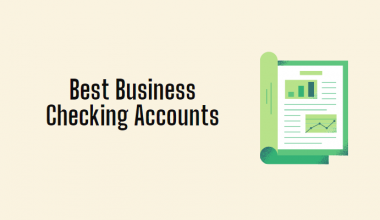When preparing your cash flow report, one of the first decisions you’ll have to make is the method of computation you’ll use to calculate your net cash flow. The indirect method of cash flow is just your business’s cash income less your cash expenses over the same period, which can yield a positive or negative outcome and provide some insight into your company’s financial health. The direct and indirect method approaches are the two most prevalent methodologies for determining cash flow from operating operations. The indirect method cash flow statement example and formula will be detailed in this article.
The cash flow statement focuses on a company’s cash sources and uses. Investors, creditors, and other stakeholders examine it closely. It displays the implications of changes in asset and liability accounts on a company’s cash position and provides information on cash earned from various operations.
What is the Indirect Method of Cash Flow?
The indirect method is a financial reporting approach in which the statement of cash flows starts with net income and then adjusts for cash operational activities before arriving at an ending cash balance.
But if you work in a company’s accounting or finance department, you might need to understand how to create an indirect method statement of cash flows. The indirect method of cash flow provides information about cash flow that identifies the amount of money a company spent or made during a given time period and its source.
Indirect Method Cash Flow Statement Example
Under the accrual method of accounting, revenue is recognized when earned, not necessarily when cash is received. When a consumer purchases a $1,000 widget on credit, the sale is complete but the money has not yet arrived. The revenue is recorded in the month in which the sale was made. The indirect method of the cash flow statement tries to convert the record to the cash method in order to show actual cash inflows and outflows over time.
In this case, a $1,000 debit to accounts receivable and a $1,000 credit to sales revenue would have been made at the time of sale. The debit raises the number of accounts receivable, which is then shown on the balance sheet.
Even though no money was received in this instance, a $1,000 income was nonetheless recorded. As a result, net income was overstated by this sum on a cash basis. Furthermore, on the balance sheet, the offset was in the accounts receivable line item. On the cash flow statement, a reduction from net income in the amount of the $1000 increase in accounts receivable attributable to this sale would be required. In other words, an “Increase in Accounts Receivable (1000)” would be displayed.
Example
CASH FLOWS FROM OPERATING ACTIVITIES FOR THE YEAR ENDED DECEMBER 31, 2018,
| Profit before tax. | 11,934 |
| Adjustment for | |
| Gain on disposal of property, plants, and equipment. | – 2750 |
| Depreciation | 6000 |
| Finance cost | 500 |
| 15,684 | |
| Changes in working capital items | |
| Decrease/(increase) in inventory | – 3250 |
| Decrease/(increase) in trade receivables | 3000 |
| increase (decrease) in trade payables | 1000 |
| Increase /( decrease) in other payables | 250 |
| Cash generated from operations | 10,184 |
| Income tax paid (2000+3,750-250) | – 3,250 |
Fixed Assets (PPE-Net book value)
| Balance b/f 30,000 | Disposal 7250 |
| Revaluation 2,500 | Depreciation 6000 |
| Purchase of PPE 20,375 | Balance c/f 39,625 |
| 52,875 | 52,875 |
In addition, remember that an income statement has restrictions, so you’ll need to account for earnings before taxes and interest. To calculate the cash flow for the company’s operating expenses, you must also account for non-operating expenses such as accounts payable, accounts receivable, inventory, depreciation, and accrued charges.
Direct vs Indirect Method Cash Flow
The two approaches for creating a company’s cash flow statement are the direct and indirect cash flow procedures. The cash flows from the operating activities section of each method differ significantly, with changes in cash receipts and payments being reported there in the case of the direct cash flow method, while adjustments to assets and liabilities accounts are made to the net income in the case of the indirect cash flow method.
The three subcategories of the cash flow statement are operating, investing, and financing. While both direct and indirect methods can be used to calculate the investment and finance components.
- Operating Activities: This activity, comprises revenue from sales of goods or services, purchases of supplies or materials, operating costs, and staff wages.
- Investing Activities: This activity, comprises the purchase or sale of assets, and the payment or collection of loans.
- Financing Activities: furthermore, this activity just includes stocks, bonds, or dividends.
Additionally, business owners, investors, creditors, and stakeholders review cash flow accounts to assess a company’s performance. A company may create monthly, quarterly, or annual cash flow statements.
Differences Between the Direct and Indirect Method of Cash Flow.
| Direct | Indirect |
| The cash received from consumers and the cash paid to suppliers, employees, and others are included in the direct method of cash flows in operating activities. | The basis for the indirect method of cash flow is net income. It performs the necessary adjustments, such as adding and subtracting variables, to convert total net income to cash from operations. |
| The direct method of cash flow begins with cash transactions such as cash received and cash paid, whereas non-monetary transactions are ignored. | In the indirect method of cash flow, all aspects are considered. |
| It takes a longer amount of time. | In the indirect method, it takes less time compared to the direct method. |
| Only a few companies adopt this strategy in comparison to the indirect method. | The indirect method is predominantly used by many companies. |
Indirect Method Cash Flow Formula
You can estimate the cash flow using the indirect method formula approach by changing net income and by adding or removing differences from non-cash transactions. Non-cash items appear on the balance sheet as changes in assets and liabilities from one period to the next. Additionally, the value of net income (also known as net profit) at the end of the reporting period is calculated in order to determine it by utilizing the indirect method of the cash flow formula approach.
The first stage is to exclude non-cash transactions from net income. While depreciation expenditures are included in the investment cash flow category for fixed assets purchased during the reporting period, they are not relevant to cash flow.
The following step is to add or deduct changes in the cash value of specified operating activity categories. The final step is to apply the effect of the changes due to investment and financing cash flows after you’ve calculated the net effect of these operational cash flows using the indirect technique.
For example:
How to Work Out Your Cash Flow. Subtract your capital expenditure and change in working capital from your net income and depreciation. Net income + Depreciation/Amortization – Change in Working Capital – Capital Expenditure = Free Cash Flow.
| Net Income | |
| + | Non-Cash Expenses: |
| (Depreciation, Depletion, & Amortization Expense) | |
| + | Non-Operating Losses: |
| (Loss on Sale of Non-Current Assets) | |
| − | Non-Operating Gains: |
| (Gain on Sale of Non-Current Assets) | |
| + | A Decrease in Current Assets: |
| (Accounts Receivable, Prepaid Expenses, Inventory, etc.) | |
| − | Increase in Current Assets |
| + | Increase in Current Liabilities: |
| (Accounts Payable, Accrued Liabilities, Income Tax Payable, etc.). | |
| − | Decrease in Current Liabilities |
| = | Net Cash Flow from Operating Activities |
Why Do We Use the Indirect Method of Cash Flow?
- The indirect cash flow method is easier to use. The reason is that it doesn’t require as much information as that direct
- The income statement and the balance sheet provide all the numbers required for the cash flow when using the indirect cash flow method.
- The indirect method makes sure to convert the net income in terms of cash flow automatically.
- Since it employs data that is already available and makes cash flow forecasting simpler, the indirect method is more frequently in use.
Furthermore, in order to prepare a cash flow statement using the indirect method, there are some keywords we ought to look out for.
#1. Setting up the Statement
When utilizing the indirect technique to calculate cash flow, you’ll first record net income for a given period before subtracting or adding non-cash items like expenses, losses, and profits. Depreciation, amortization, and depletion are examples of non-cash expenses.
#2. Adjust Your Net Income
Then you’ll have to alter your net income to account for any changes in asset accounts that may have had an impact on your company’s cash flow. Inventory, prepaid expenses, and accounts receivable are examples of these accounts. To figure out which direction your net income should be modified, you’ll need to compute how these adjustments influence cash. If an asset increases throughout the recording period, for example, cash leaves your organization, the increase must be deducted from net income.
#3. Account for Liabilities
Last but not least, make adjustments to your net income to account for changes in your liability accounts. Accounts payable and accumulated expenses are two of the accounts you’ll need to think about.
What Are the Limitations of the Indirect Method?
Because the indirect method bases its calculations on accrual basis accounting, it is possible that the business won’t always have the necessary cash on hand.
Additionally, because cash flow statements are frequently prepared over a quarter or a fiscal year, they only offer a glimpse of a company’s financial situation for a little period of time. Without taking into account elements like key market trends or the company’s history, it can be difficult to make any judgments regarding viability that will last over the long term from these.
Is the Indirect Method of the Cash Flow Statement Better Than the Direct Method?
Neither is inherently superior or inferior. The indirect method, however, also offers a way to match up balance sheet items with income statement net income. An accountant can recognize balance sheet increases and decreases that are the consequence of non-cash transactions as they are made while they produce the CFS using the indirect technique.
A better knowledge of the financial statements as a whole might result from knowing the impact and relationship between the accounts on the balance sheet and the net income on the income statement.
What Is Included in Cash and Cash Equivalents?
On a company’s balance statement, cash and cash equivalents are combined into a single line item. It provides information on the worth of a company’s assets that are currently cash or have a short time horizon, typically 90 days, for conversion into cash. Currency, petty cash, bank accounts, and other highly liquid short-term assets are all examples of cash and cash equivalents. Commercial paper, Treasury bills, and short-term government bonds with a maturity of three months or less are a few examples of cash equivalents.
How Do You Forecast Cash Flow by Indirect Method?
Forecasting one’s future cash flow through an indirect method. The profit and loss statement and the balance sheet are used to produce forecasts. First, the net income for the period you wish to analyze is determined, and then the balance sheet items that either affect profit (but not cash flow) or ones that affect cash flow are added and subtracted (and not profit).
How Do You Know if Indirect Cash Flow Is Correct?
Compare the figure for the change in cash with the statement of cash flows to determine whether or not there was a net increase or decrease in cash. If there is no difference in the outcomes, then the statement of cash flows can be considered accurate. If they don’t match up, it suggests that there was a mistake made with the statement of cash flows.
When We Should Follow Indirect Method in Cash Flow Statement?
What does it mean when a cash flow statement uses an indirect method? The indirect method is a method for calculating cash flow that uses transactions to estimate payments and expenses rather than cash on hand. In general terms, the indirect method is a means to compute cash flow. The indirect method determines how much money a corporation made or spent during a specified time period from a variety of different sources.
Conclusion
The indirect method of cash flow is considered in all aspects. Net income does not represent net cash flow from operating activities because the income statement is prepared on an accrual basis, in which revenue is recognized when earned rather than when received, however, it is necessary to adjust earnings before interest and tax for those items that affect net income even though no actual cash is paid or received against them.
Indirect Method Cashflow FAQs
What is the difference between direct and indirect method of cashflow
Only a few companies adopt this strategy in comparison to the indirect method while the indirect method is predominantly used by many companies.
What is the Indirect Method Cash Flow Formula?
It is calculated by adjusting net income by adding or subtracting differences resulting from non-cash transactions.
What is the Indirect Method of Cash Flow?
The indirect method of cash flow is a way to have data in a cash flow that demonstrates how much money a company made or spent during a specific time period and where the money came from.
RELATED ARTICLES
- Cash Flow Statement Indirect Method: Overview, Examples, Calculations.
- Cash Flow Forecasting: Meaning, Methods, Tools, Models (plus Detailed Templates).
- Cash Flow Statement Direct Method: Overview, Examples, Pros & Cons.
- STATEMENT OF CASH FLOWS: Understanding the Statement of Cashflows with Examples.
- WAGE GARNISHMENT: How Does It Work
- INCOME STATEMENT: Formats, Examples, and How To Prepare One






